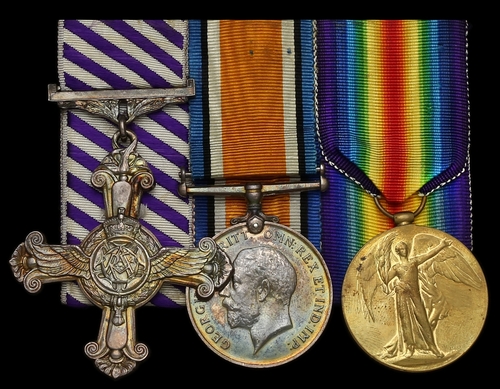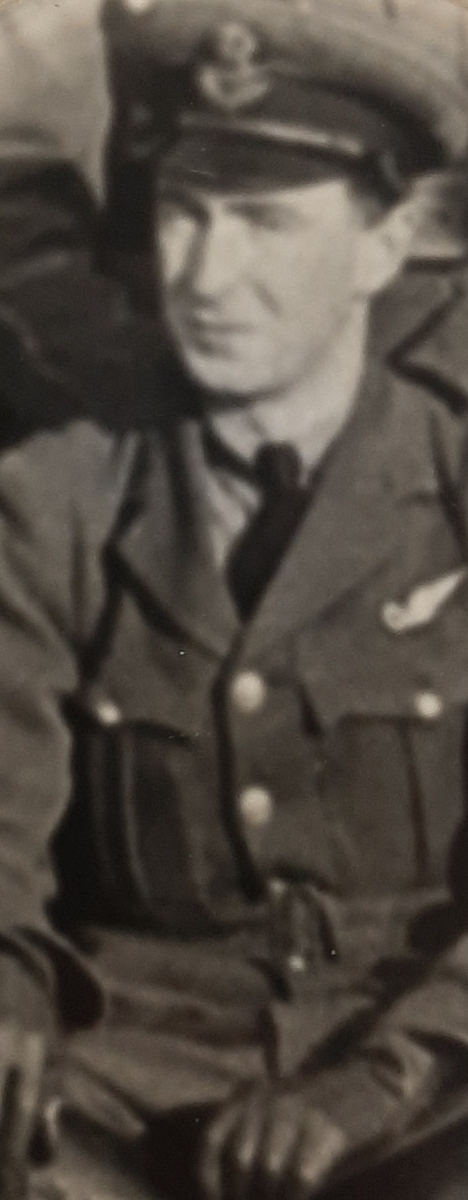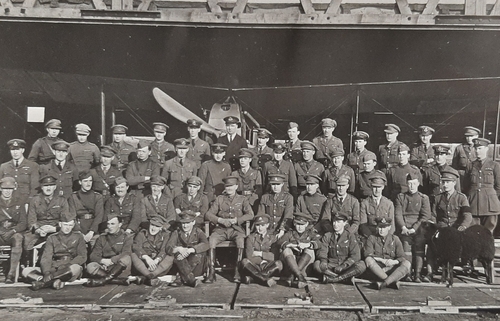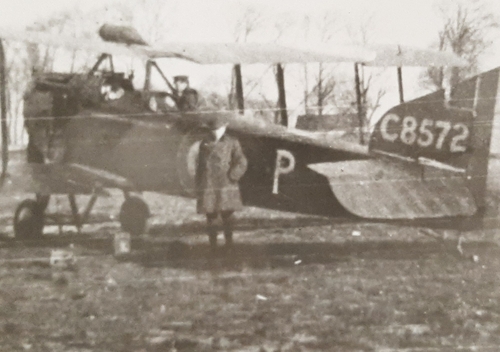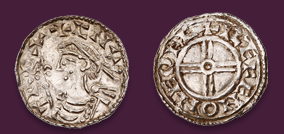Auction: 25002 - Orders, Decorations and Medals
Lot: 190
The 'Battle of the Somme 1918' D.F.C. group of three awarded to Lieutenant R. A. Thomas, Royal Air Force, late Royal Welch Fusiliers, who saw exceptionally heavy flying during the Hundred Days Offensive which saw them forced down by Anti-Aircraft machine gun fire in September 1918
Distinguished Flying Cross, G.V.R., unnamed as issued; British War and Victory Medals (2.Lieut. R. A. Thomas. R.A.F.), slight edge bruise, very fine overall (3)
D.F.C. London Gazette 3 June 1919 the original citation states:
'This officer has been an Observer in No. 10 Squadron for 7 months, working always with pilots engaged on Contact Patrol, C.A.P. and Photography, and at all times has carried out with the greatest enthusiasm and gallantry his Observer's share of the work. He has been a most valuable officer. His Pilot was awarded the D.F.C. in November.'
Robert Arthur Thomas was born on 4 July 1888, a native of Rossett, Denbighshire, Wales and worked as a bank clerk with the Bank of England before the war. Commissioned 2nd Lieutenant with the 10th Battalion, Royal Welch Fusiliers he was seconded to the Royal Air Force and joined No. 10 Squadron. Thomas flew his first mission for artillery observation on 18 June 1918, just after the Squadron had been re-equipped with Bristol F.2 Fighter.
Thomas' first combat patrol was over Ypres on 21 June with Lieutenant T. J. Forbes as his pilot. He was officially posted to the Royal Air Force on 6 July 1918 as an Observer, undertaking further missions consisting largely of reconnaissance and counter-attacks, including a bombing attack in which two 20lb bombs were dropped.
During one mission on 13 August his aircraft was fired at by their own anti-aircraft guns when flying over Poperinghe. They were hit twice by the A.A. as well as machine gun fire from the Allied trenches; 6 machine gun rounds were found lodged in the aircraft. The next day whilst flying a reconnaissance mission over Wytschaete, they were pursued by German scouts but managed to escape.
The end of August through early September were largely taken up with reconnaissance patrols, likely due in the main to Allied advances during the Hundred Days. This saw the Germans pushed back quickly with the Generals needing more reliable information than they did bombing missions. This period also saw the start of his association with Lieutenant Thomas McMillan Shields, the pilot with whom he was to later win his laurels.
The pair undertook a mammoth four missions on 16 September 1918, highlighting the pace of the Allied advance. The strain of this on both men and machines is palpable in the Squadron Records, particularly with the case of Shields and Thomas who crashed on take-off during their 4th mission, although neither were badly hurt.
Thomas was not inactive as an Observer, when encountering a German aircraft while on an artillery spotting flight on 21 September 1918 he fired 30 rounds from his Lewis gun into it. Sadly the failing light made identification of type impossible and also doubtless made the shot difficult, preventing him from making the kill. The aircraft was however driven off by a combination of Allied A.A. fire and Thomas' Lewis.
The original D.F.C. Squadron submission for decoration for Thomas' pilot, Lieutenant Shields survives to us. It provides further detail on the danger of the work the pair were preforming during the Second Battle of the Somme, stating:
'Several enemy positions were seen from which heavy machine-gun and rifles fire was drawn, 400 rounds being fired in retaliation. Height 100 to 1000 feet.'
Unfortunately, Shields strayed too close to this redout with inevitable results: 'His machine was hit by A.A.M.G. [anti-aircraft machine gun] forcing him to land near Zillebeke. A strongly held enemy trench was found, which he and his Observer continuously engaged, keeping the enemy occupied until they were surrounded by our own men.' (Ibid)
Surprisingly they were up again the same day and back to the same schedule of intense reconnaissance and contact patrols. The next day Thomas fired 250 rounds of Lewis gun ammunition at a ground based strongpoint, along with 160 rounds of Vickers fire from Shields. Thomas and Shields were again in the air on 10 November the day before the armistice, their flight details outline the feeling of relief felt by all as the armistice loomed:
'0800. Ellezelles appeared to be clear of enemy troops, flags seen in the streets and civilian waving hands.'
Thomas survived the war and transferred to the unemployed list on 2 February 1919; sold together with copied research.
Subject to 20% VAT on Buyer’s Premium. For more information please view Terms and Conditions for Buyers.
Sold for
£2,100
Starting price
£800

